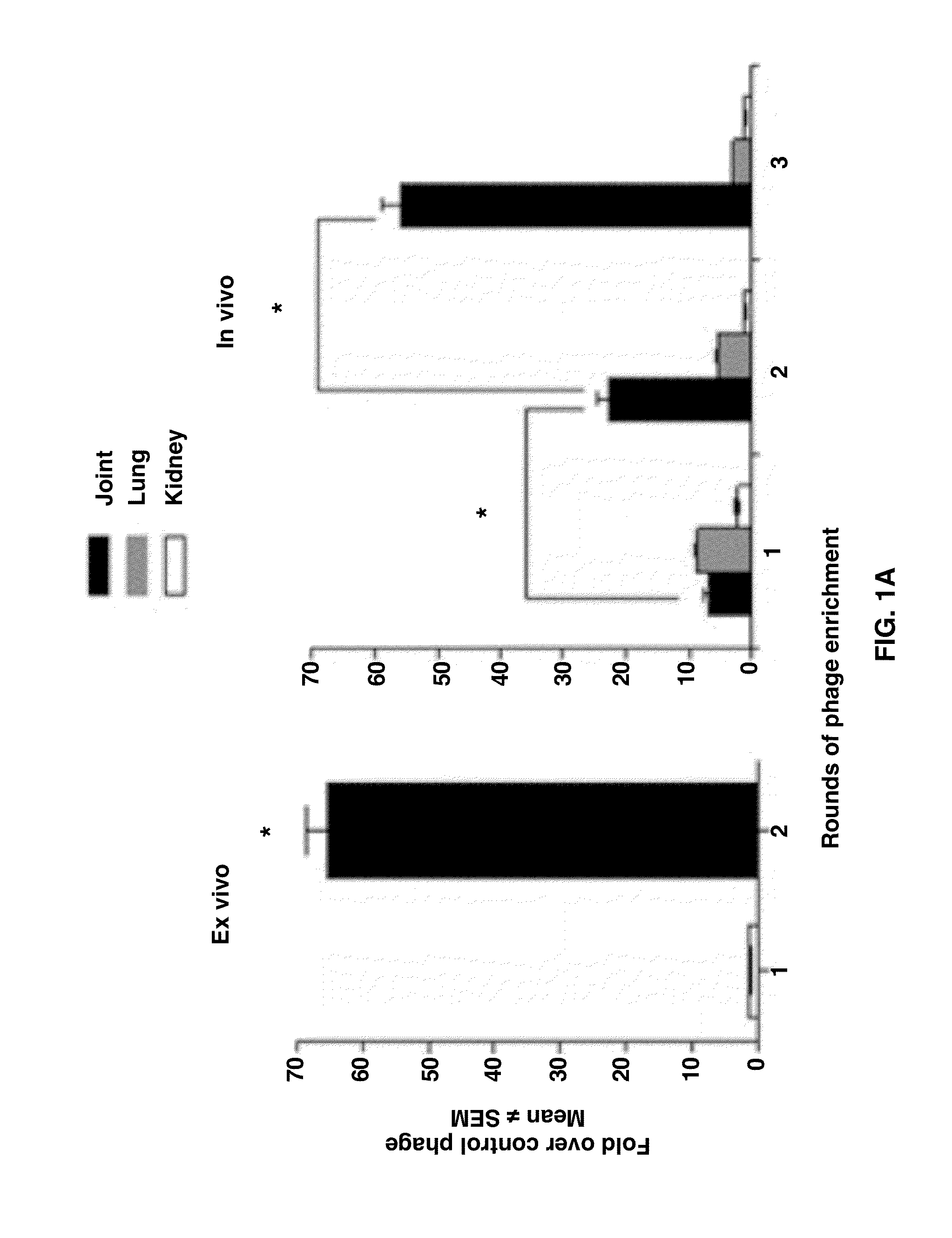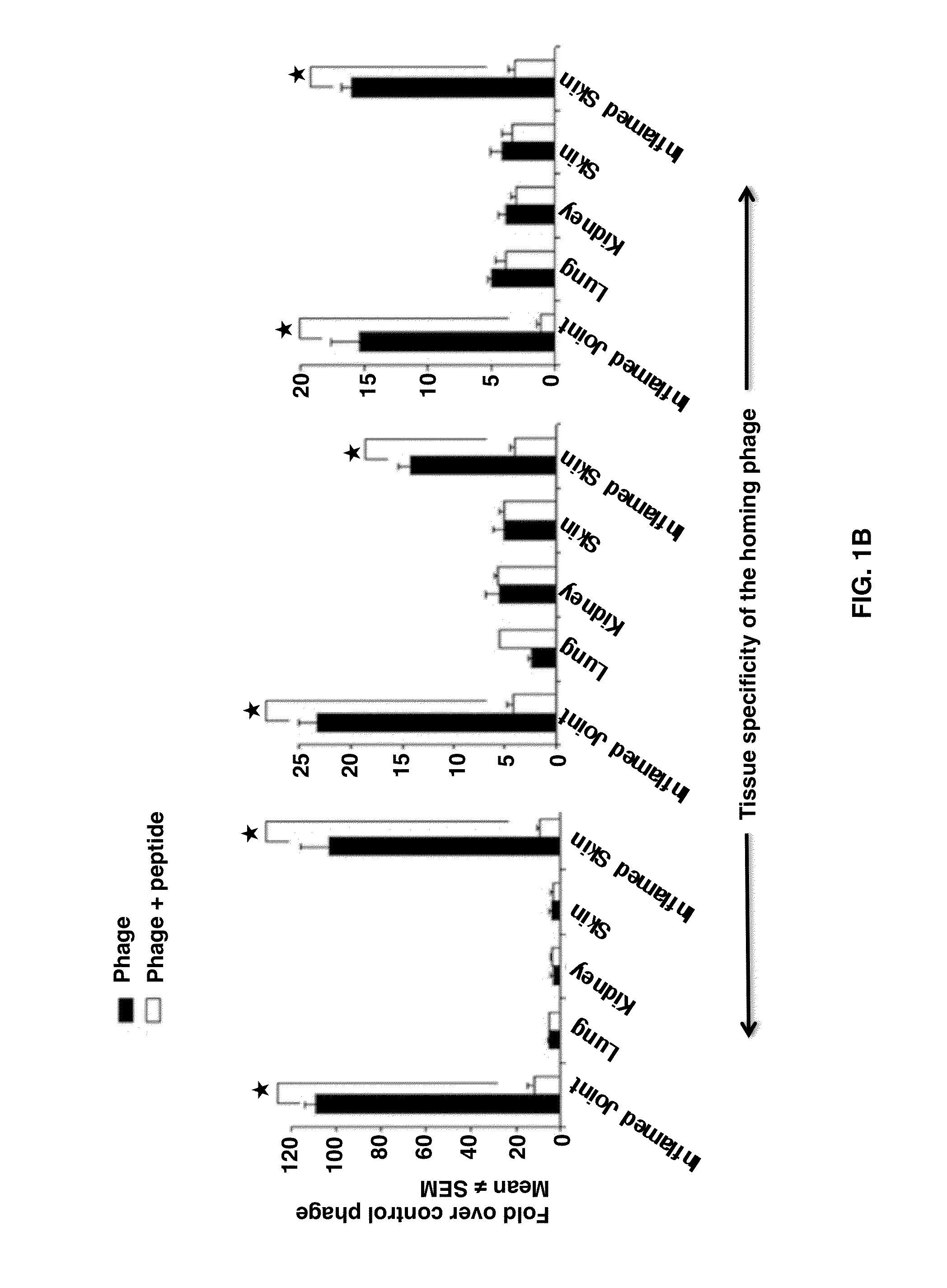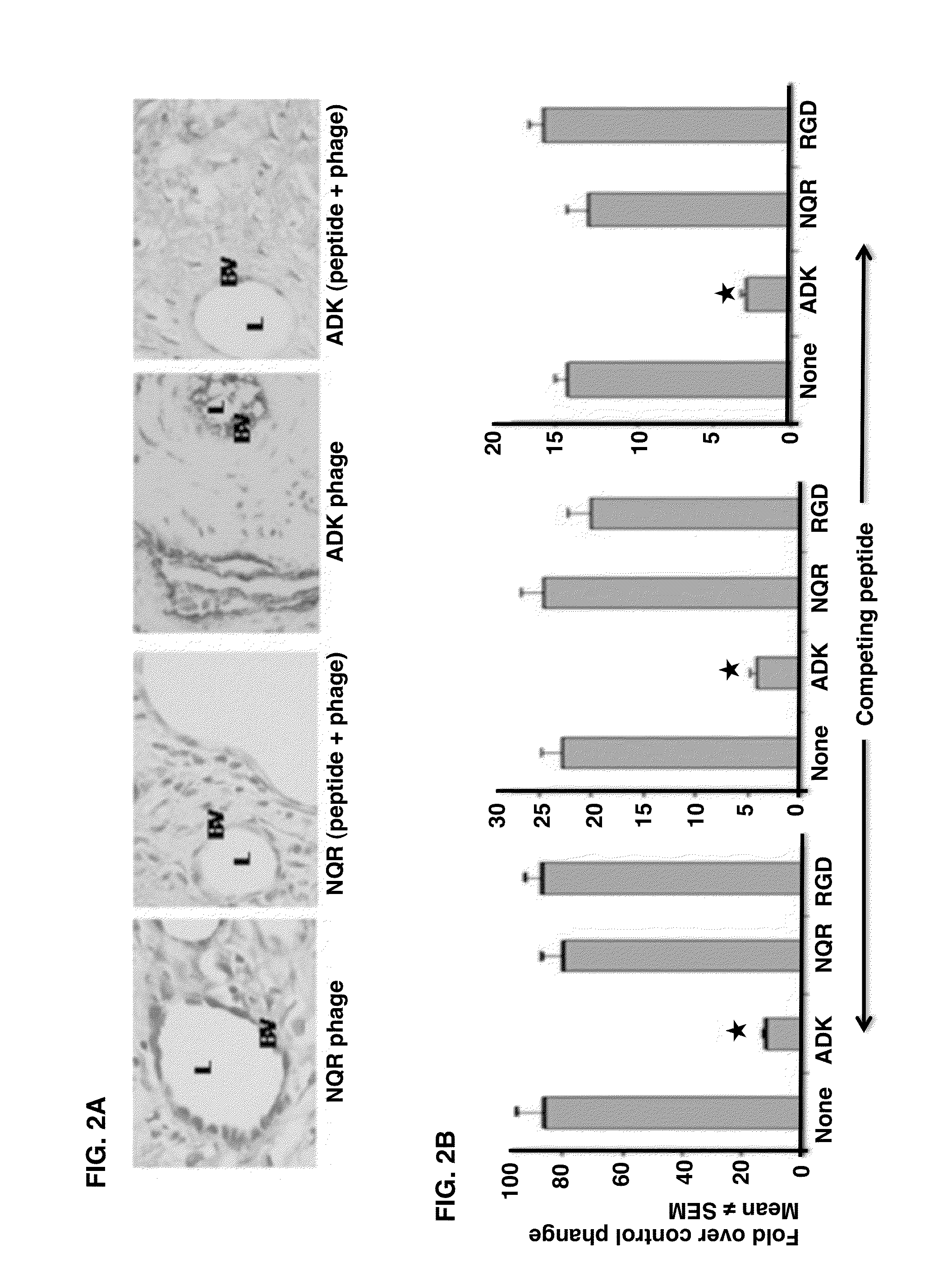Joint-homing peptides and uses thereof
a technology of peptides and peptides, which is applied in the field of joint-homing peptides, can solve the problems of deficiency of novel peptides that home, in the early art, and achieve the effect of improving the sensitivity and sensitivity of peptides
- Summary
- Abstract
- Description
- Claims
- Application Information
AI Technical Summary
Benefits of technology
Problems solved by technology
Method used
Image
Examples
example 1
Animals
[0038]Lewis (LEW / SsNHsd; RT.1I) rats were purchased from Harlan. Four-to-six week old male rats were used. The rats were housed in the vivarium of the University of Maryland School of Medicine and were handled in accordance with the school's Institutional Animal Care and Use Committee.
example 2
Phage Library and Ex Vivo / In Vivo Phage Screening
[0039]The CX7C library displayed on the T7Selected415-1 phage (Novagen) was prepared as described previously (9, 14). This library was subjected to sequential ex vivo and in vivo phage selection. For the ex vivo selection, 1×107 cells from the harvested synovial tissue were incubated overnight at at 4° C. with 5×1010 plaque-forming units (pfu) of a CX7C library. These cells were washed to remove unbound phage and then incubated with mouse anti-rat CD31 antibody. The CD31+ cells were then isolated using rat anti-mous IgG1 microbeads. Phage bound to the CD31+ cells was rescued, tittered, and amplified using Escherichia coli BL21
[0040]For the in vivo selection, the phage pool (5×1010 pfu) from the foregoing screen was injected into an arthritic Lewis rat via the tail vein under anesthesia. The phage was allowed to circulate for 10 min, after which the rat was perfused through the left ventricle with PBS containing 1% BSA to clear unbound...
example 3
Synthetic Peptides
[0041]Peptides were synthesized at the University of Maryland School of Medicine's Biopolymer / Genomic Core Facility, GenScript Corporation, and Peptide International. For easy description, each peptide was given an abbreviated name, e.g., ADK or NQR.
[0042]The complete amino acid sequences of the peptides are as follows: ADK peptide, CRNADKFPC (SEQ ID NO: 1); NQR peptide, CLDNQRPKC (SEQ ID NO: 2); RGD peptide, RGDfK (SEQ ID NO: 3). The RGDfK peptide was chosen over CDCRGDCFC (SEQ ID NO: 4), i.e., RCD-4C (SEQ ID NO: 4) because of the relative ease of synthesis, and the two peptides have a similar affinity for αv integrins (21). In addition, the RGDfK (SEQ ID NO: 3) peptide may be more resistant to proteolysis because of its small ring and D-amino acid residue.
PUM
| Property | Measurement | Unit |
|---|---|---|
| concentrations | aaaaa | aaaaa |
| concentrations | aaaaa | aaaaa |
| concentrations | aaaaa | aaaaa |
Abstract
Description
Claims
Application Information
 Login to View More
Login to View More - R&D
- Intellectual Property
- Life Sciences
- Materials
- Tech Scout
- Unparalleled Data Quality
- Higher Quality Content
- 60% Fewer Hallucinations
Browse by: Latest US Patents, China's latest patents, Technical Efficacy Thesaurus, Application Domain, Technology Topic, Popular Technical Reports.
© 2025 PatSnap. All rights reserved.Legal|Privacy policy|Modern Slavery Act Transparency Statement|Sitemap|About US| Contact US: help@patsnap.com



